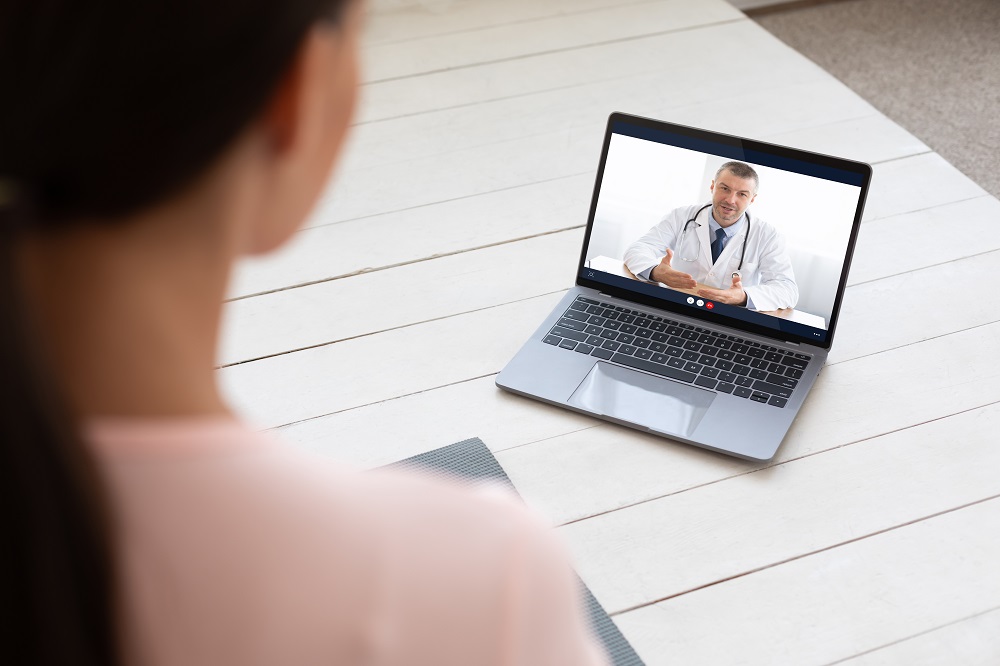Virtual doctor’s appointments are a fantastic option during COVID-19. Virtual appointments provide people with the opportunity to have their medical needs met from the safety of their own homes. Telehealth visits are growing in popularity, with March of 2020 seeing a 50% increase in patients choosing to see their doctor virtually.
Virtual visits are expected to reach 200 million by the end of this year—a sharp increase from the originally-projected 36 million.
So, what is a virtual doctor’s appointment, and what benefit does it have to you or your loved ones over in-person visits? What can doctors do (and not do) on this platform? We answer all these questions and explain how to make the most of any virtual appointment.
What Is a Virtual Doctor’s Appointment?
How do these telehealth visits work, exactly?
To put it simply, virtual visits allow you to see your doctor from the comfort of your own home. Conveniently schedule your appointment during a lunch break from work or even when traveling in a different state.
You can attend your telehealth appointment with a laptop, desktop, smartphone, or tablet. This is a video call, which means you can show your doctor your injury or concern—such as an eye injury or infection, for example—or just ask questions, as you would in person.
This process takes out the travel time and time spent in the waiting room. It connects you with your doctor in a seamless, time-friendly manner that requires appointments like an in-person visit. Patients receive the same level of care and attention as they would in an in-person visit.
Of course, some concerns need in-person attention (we’ll discuss this later in the blog). But virtual visits are an excellent choice for most people with a non-emergency health concern.
Why Did Telemedicine Start?
While virtual doctor’s appointments have surged in popularity in recent months (one provider saw 15,000 video requests in one day!), they’ve been around for quite some time.
In the 1920s, the radio was used to provide medical advice to clinics on ships. Fast-forward to the 1990s, and people saw ‘high rates of agreement’ between diagnoses made in-person, compared to over-the-phone.
The same can also be said for virtual doctor visits that concern mental health.
Telemedicine began as a way to help those who didn’t have direct access to medical care. It has now evolved into a convenient way for anyone to see their doctor, no matter where they were.
What Are the Advantages of Virtual Visits vs. In-Person Ones?
Of course, the most obvious benefits of virtual doctor visits are the convenience and accessibility factors.
This point is especially true during the coronavirus pandemic. The elderly, immunocompromised, and those without a safe transportation option can still see their doctors without worrying about high exposure rates on public transit and in the waiting room. This is beneficial for patients’ safety, as well as the safety of our healthcare workers.
Additionally, those with busy schedules, health problems that prevent them from leaving the house, and more, can still receive the medical care they need. Without telehealth, these individuals may be at a loss for options.
If someone is experiencing a relatively mild issue—allergies, stomach problems, the common cold—they don’t need a lengthy appointment. Instead, they can quickly and easily receive a diagnosis and treatment plan from their living room. For minor health concerns, virtual appointments are extremely effective and convenient.
If you’re worried about the cost, don’t be! A virtual appointment at CityHealth Urgent Care costs the same as an in-person appointment for an established patient and less than an in-person appointment for a new patient. Many insurance carriers cover telemedicine. If you have insurance, speak to your provider to ensure telehealth visits and services are included in your plan.
What Are the Limitations of Virtual Appointments?
Of course, virtual doctor’s appointments have limits on what they can address.
A telehealth appointment can confirm you need, for example, a biopsy, stitches, or an X-ray, but you will need to visit your doctor in-person to complete these services.
Someone experiencing a major medical emergency—broken bones, a heart attack, life-threatening issues—should go straight to an in-person care facility. Testing for COVID-19 is not possible in a virtual visit.
Telehealth appointments are perfect for the flu, cold, or allergy symptoms, new parenting questions, medication management, mental health issues, and much more.
During these virtual appointments, your doctor will rely heavily on self-reporting and sight. While physician expertise can quickly sift out any issues, there will be challenges if a patient is unable to discuss their needs. For some concerns about young children, or anyone who may not be able to describe their symptoms, an in-person visit may be necessary.
At CityHealth Urgent Care, our physicians offer in-person and virtual visits, meaning you may still see your doctor whether you choose a telehealth appointment or in-person visit.
How to Have a Good Virtual Visit With Your Doctor
To make your virtual doctor’s appointment that much better, there are some steps you can take to prepare:
- Check with your insurance provider to ensure they cover telehealth visits
- Prepare a list of your symptoms, experiences, and questions so you can have all your concerns answered during the appointment
- Test your internet connection to prevent delays or cut-offs
- Have your appointment in a quiet room without distractions
- Consider using headphones for more reliable sound
Book a Virtual Doctor’s Appointment Today
Now that you have all your telemedicine questions answered, you may be wondering how to book a virtual doctor’s appointment. Luckily for you, it’s just as easy as scheduling an in-person visit.
At CityHealth Urgent Care, we provide a range of services through our virtual appointments, and we’re looking forward to meeting with you and seeing how we can help.
Book a virtual appointment with us today. Please reach out with any concerns or questions.




